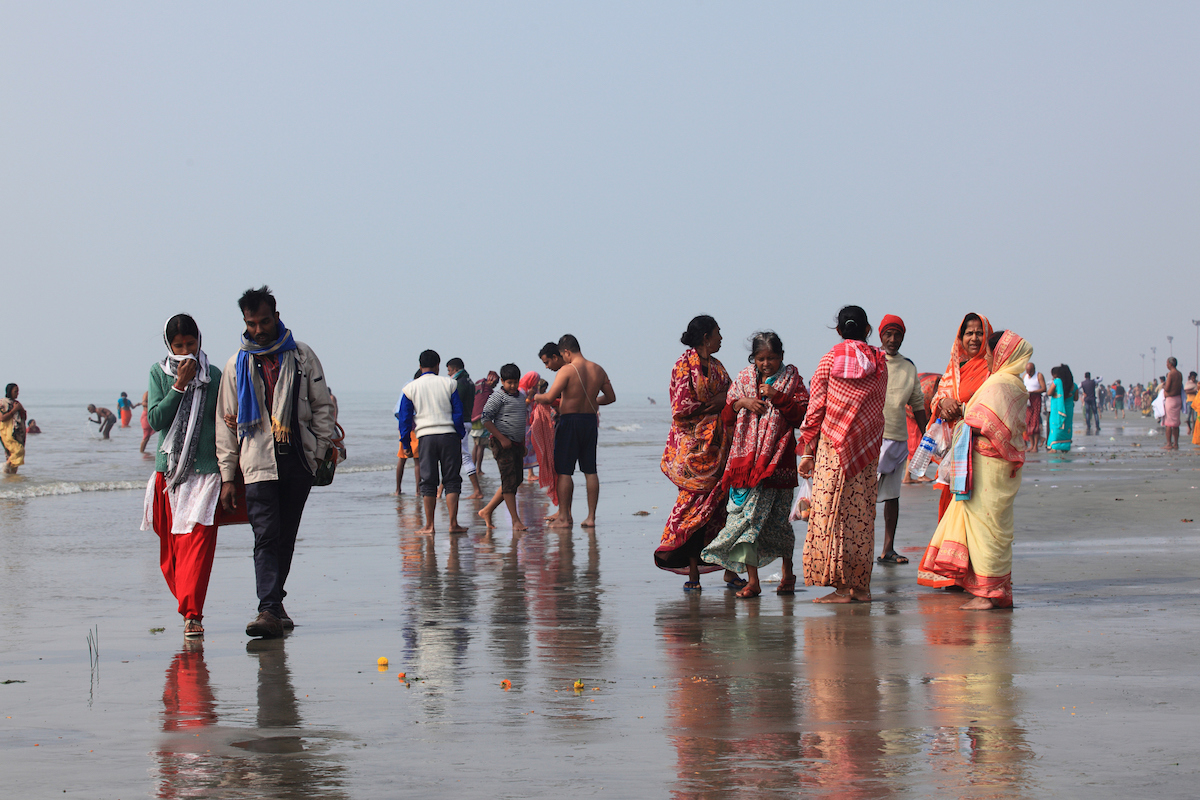Pollution threat
With barely a fortnight to go for the Ganga Sagar mela ~ when Kolkata’s Maidan becomes particularly vulnerable to pollution…
Towards that rational end, the Bench has observed that the “state government is directed to consider whether special incentives could be given to pilgrims, who would opt for esnan”.

Hindu pilgrims gathered to take a holy dip in Ganges on the day of 'Makar Sankranti' in Gangasagar Islands, West Bengal,India.(Photo:iStock)
Just a couple of days ahead of the annual pilgrimage of the faithful to Ganga Sagar in West Bengal, a Division Bench of Calcutta High Court (coram: TBN Radhakrishnan, CJ; and Arijit Banerjee, J) has signalled a very timely word of caution not the least because of a possible surge of coronavirus in view of the huge crowds from all over the country that will assemble for the holy bath on 14 January.
With no restriction on the number of participants, unlike at the Kolkata International Film Festival and a welter of other events such as the book fair, the Bench has precribed the novel praxis of “e-snan” (virtual bathing) during the Ganga Sagar mela at Sagar Island this year.
Towards that rational end, the Bench has observed that the “state government is directed to consider whether special incentives could be given to pilgrims, who would opt for esnan”.
Advertisement
Considering the religious connotation of the ritual and the mela and the hundreds of thousands of visitors, the court has stopped short of declaring Sagar Island as a containment zone (as petitioned) though the crowd can daunt the most intrepid administration.
The plea was made in the backdrop of the pandemic, one that has not militated against “mass bathing”.
The Ganga Sagar mela is, after all, a profoundly emotive issue. In its immediate response, the health department has articulated the state government’s decision to store “Sagar water” in small containers for pilgrims, who will be asked to take their bath with it instead of going to Ganga Sagar this year in view of the pandemic.
Whether or not this will satisfy the pilgrims, many of them as fanatical as they are faithful, is quite another story. “E-snan” water wil be distributed through state managed kiosks during the duration of the mela (January 12 to 16) free of cost. It has been readily acknowledged by the health department, helmed by the Chief Minister, that only e-bathing by pilgrims could keep the situation under control. Without cutting corners, it is fervently to be hoped that the state government will give it a try in right earnest.
Small wonder that the High Court has directed the state’s Chief Secretary to furnish a report on 13 January on the measures implemented “on the ground”. This will enable the court to decide whether the annual fair should be allowed this year “keeping in mind the pandemic and the paramount interest of public health at large”.
The second persists as a frightful challenge on the first anniversary of the pandemic, so to speak. There is the very real possibility of the infection spreading when pilgrims take the holy dip at the crack of dawn. While the esnan and e-darshan options are intended to avoid overcrowding and even during transportation in part by road and in part by boat and steamer, the challenge is to convince people who believe faith – and not science ~ will keep them safe..
Advertisement